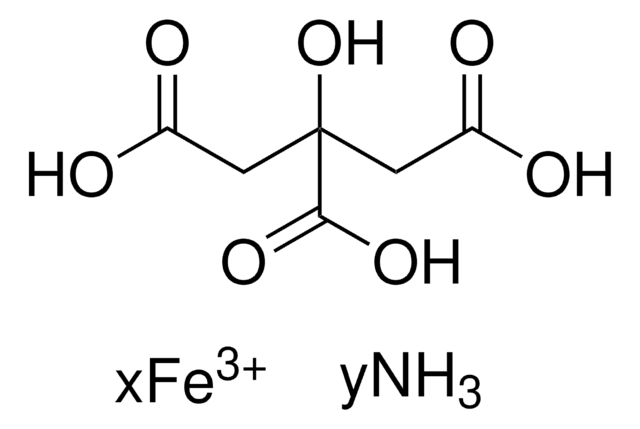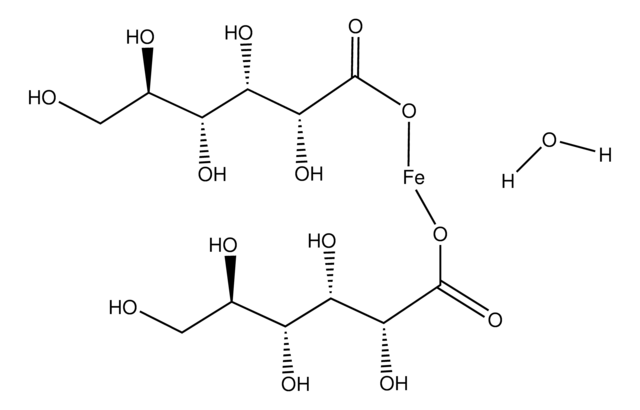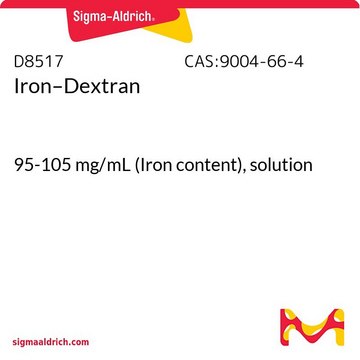Key Documents
F6129
Iron(III) citrate
technical grade
Synonim(y):
Ferric citrate, Iron(III) citrate, Iron(III) citrate hydrate
About This Item
Polecane produkty
klasa czystości
technical grade
Postać
powder
skład
Fe, 16.5-18.5%
metody
cell culture | mammalian: suitable
Zastosowanie
battery manufacturing
ciąg SMILES
OC12CC(=O)O[Fe](OC(=O)C1)OC2=O
InChI
1S/C6H8O7.Fe/c7-3(8)1-6(13,5(11)12)2-4(9)10;/h13H,1-2H2,(H,7,8)(H,9,10)(H,11,12);/q;+3/p-3
Klucz InChI
NPFOYSMITVOQOS-UHFFFAOYSA-K
Szukasz podobnych produktów? Odwiedź Przewodnik dotyczący porównywania produktów
Powiązane kategorie
Opis ogólny
Zastosowanie
It can also be used in the degradation of tetracycline for the treatment of polluted water.
Kod klasy składowania
11 - Combustible Solids
Klasa zagrożenia wodnego (WGK)
WGK 2
Temperatura zapłonu (°F)
Not applicable
Temperatura zapłonu (°C)
Not applicable
Środki ochrony indywidualnej
Eyeshields, Gloves, type N95 (US)
Wybierz jedną z najnowszych wersji:
Masz już ten produkt?
Dokumenty związane z niedawno zakupionymi produktami zostały zamieszczone w Bibliotece dokumentów.
Klienci oglądali również te produkty
Produkty
Nanocząstki plazmoniczne mają unikalne właściwości optyczne, które można dostosować do różnych zastosowań w przemyśle biotechnologicznym1-8 i elektronicznym9-16.
Nasz zespół naukowców ma doświadczenie we wszystkich obszarach badań, w tym w naukach przyrodniczych, materiałoznawstwie, syntezie chemicznej, chromatografii, analityce i wielu innych dziedzinach.
Skontaktuj się z zespołem ds. pomocy technicznej







